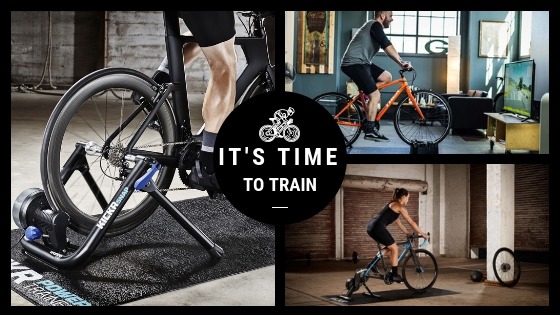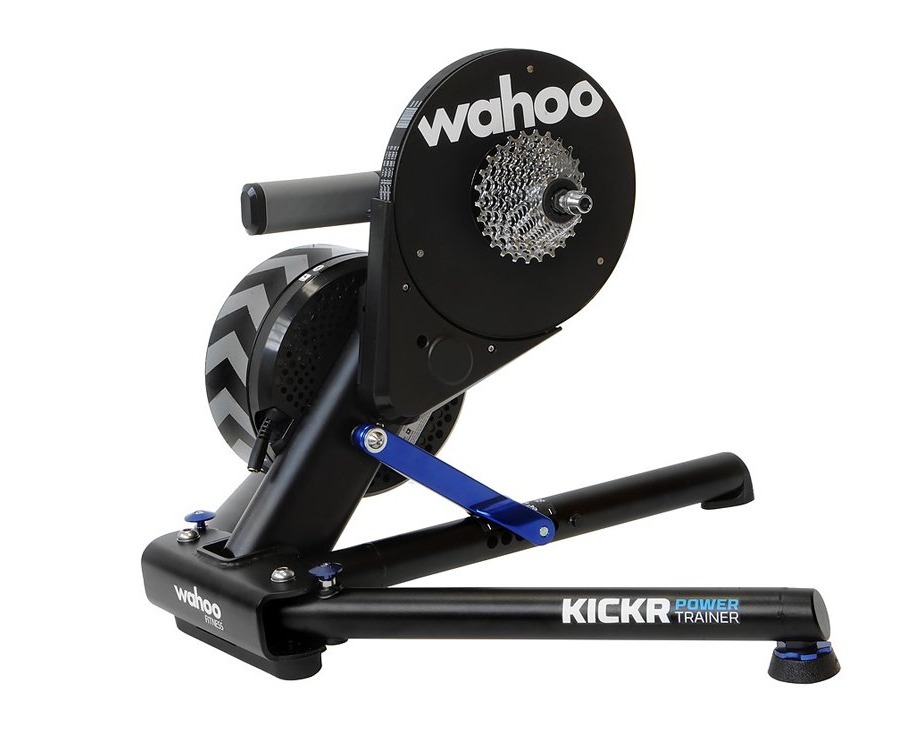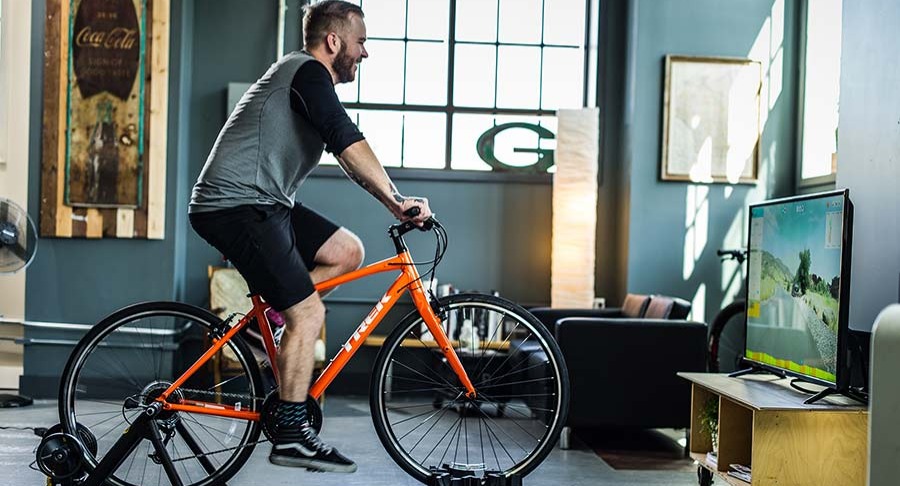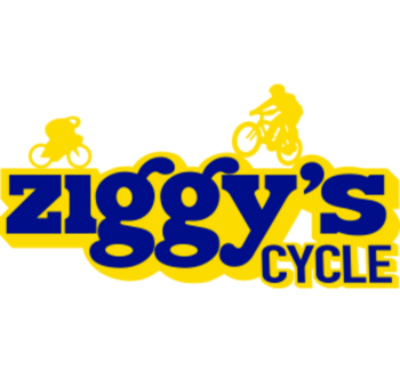
Indoor Training for Beginners
Monday, October 22, 2018 by Ziggy's
You've been cycling all summer and you're feeling great! You've hit a couple of personal goals, maybe you've even competed in a race or two. You've explored the region, made some new friends, and are constantly looking forward to your next ride.
But then along comes fall, and then winter. The cold front brings cold, rain, and the temptation to pick up that book or remote. All you want to do is grab a warm blanket, sit on the couch and stop working out. While it's fine to take a break now and then, the hard-earned fitness gains you made during the spring and summer months don't have to be lost! And while hitting the gym can help you maintain some of your fitness, it's important to keep riding too so you don't lose your specific cycling fitness. So grab your bike, grab an indoor trainer, and get at it!

Indoor Trainers
If you're new to indoor training just getting plain old sick and tired of how uncomfortable your stationary bike is, there's a solution for you! An indoor trainer is a simple, portable tool, that lets you ride your favourite bike indoors. While there are a variety of types of indoor trainers, all have a basic resistance feature to simulate riding outdoors and function to support your bicycle and let you pedal in place.
Magnetic trainers use a magnetic flywheel to provide resistance. Magnetic trainers like the Cyclops Mag+ uses magnets to generate range of adjustable resistance. Magnetic trainers operate with linear resistance, meaning as you pedal faster or shift gears, the resistance changes proportionally to your change in speed. This results in resistance that feels least like road riding. Magnetic trainers great for cyclists who want an affordable yet effective way to stay in shape year round.
Fluid trainers are any trainer that uses a viscous fluid, like liquid silicone, in the unit to create resistance. Trainers like the Cyclops Fluid2 use fluid resistance in the flywheel to deliver a smooth, realistic road feel while riding. Fluid trainers provide progressive resistance, which provide more realistic accelerations and inertia, resulting in a trainer that feels almost exactly like the road. Fluid trainers have wider ranges of resistance than magnetic trainers and are generally more quiet. Although they are a little bit more expensive, fluid trainers are more durable and often come with more features.
Smart trainers are electromagnetic, in that they utilize magnetic resistance that can be fine-tuned by electric signals from a cycling computer or phone. Companies who manufacture trainers generally provide the basic software to automatically adjust the resistance on your trainer and give you precise measurement and feedback while riding. Other apps allow you to create customizable workouts, which gives you precise control over your training zones and slope. A popular smart trainer is the Kickr series by Wahoo. It's more expensive than both magnetic or fluid trainers, but the features and the quality of the resistance is more than worth it.

Be Prepared to Sweat
Because you're riding indoors, there's no cool breeze to cool you down or dry off your sweat. When setting up your trainer, pick a room with a floor that's resistant to sweat and any lubricants that might come off the bike chain. Alternatively, you can put a training mat underneath your trainer and bike. It's also important to grab a towel or a sweat guard to protect your bike from the corrosive salt that comes with sweat. Some trainers come as a bundle that include a both.
Another tip is to set a fan nearby to simulate the breeze you would enjoy outdoors. The fan will reduce the heat build-up of riding in place and it will help to evaporate some of the sweat. That being said, you'll still sweat a lot. So be sure to keep the fan running, have a towel within reach, and prepare plenty of cold water or energy drinks to keep you cool and hydrate while you ride.

Have a Goal
Use the SMART acronym to set meaningful goals that you are willing to put some effort in to achieve. SMART stands for:
- Specific (simple, sensible, significant).
- Measurable (meaningful, motivating).
- Achievable (agreed, attainable).
- Relevant (reasonable, realistic and resourced, results-based).
- Time bound (time-based, time limited, time/cost limited, timely, time-sensitive).
Look to your schedule and the habits you already have to help you set your goals. Do you usually commute to work throughout the warmer months? A SMART goal for the fair-weather commuter would be to train for half an hour both before and after work, for at least five days a week. Do you usually ride more sporadically? Commit to one time a week that you know you fits into your schedule and go from there. As you start to successfully achieve your goals, make them a little bit harder: ride a little longer or a more often.
Make it Fun!
Since the scenery does not change while you're riding in place, it's best to have distractions so you don't get bored. Listening to your favorite music, watching TV or videos and even reading a book can work great. A nice motivator is to save your favorite movies or recorded TV shows to watch during your workouts. You're sure to get your rides in if it's also when you catch this week's episode of that show you love.
Be sure to change things up during your workout to make the time pass too. For example, include intervals of higher and lower levels of intensity to help pass the time and make you work a little more. This helps you keep your indoor session interesting, beneficial and fun.
We offer indoor cycling classes every year between November and March. Led by a professional coach, we structure workouts designed to meet your training goals. Bring your friends and come get your ride on in a safe and inclusive environment. We start scheduling training days and times in October, so if you have a specific request for our upcoming classes please feel free to get in touch.
